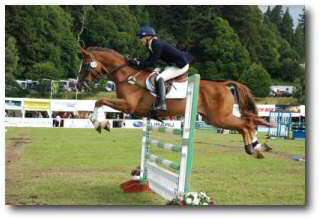For horse riders
Do you …
- Have a stiff hip, or bad back that affects your riding?
- Have a leg that has a “mind of its own”?
- Collapse in the saddle, no matter how hard you try, or how many core-strength exercises you do?
- Find it hard to co-ordinate your body to enable your horse to do good lateral work?
- “Freeze” during competition or jumping certain fences?
I have found over the years that many riders “beat themselves up” over their alleged lack of ability. Putting more and more physical effort into whatever it is that plagues them – after all, no–one wants to be a bad rider! The trouble is, oftentimes, we use an additional muscular effort to overcome the problem. This is called a “secondary compensation” and doesn’t fix the problem. For example, a “chair seat” rider is told to sit up tall, which generally means they do something with their shoulders and/or head. As this isn’t the primary cause of the slouch (and no, it’s not laziness!) they can’t maintain the change and revert back. Or this second tension translates through to stiff elbows or hands. The classic “nodding dog” at sitting trot is another example, caused by a stiff low back unable to absorb the horses’ movement. This may have originated from tight knees or ankles.

So, what’s the alternative?
Depending on what you want to work on, I don’t necessarily need to see you ride. Usually some hands on work is required, then you can begin to feel the new coordination away from the horse, when it is easier to sense to begin with. You won’t be given an exercise regime to do – who has the time when you have horses?! Instead, it is usually as simple as substituting a more helpful pattern to a daily habit. Freeing the structure to allow function more freedom.
Telephone:
(07901) 808529
Email:
jactherolfer icloud.com
icloud.com
“The best bit is the one in wise hands.”
– General L’Hotte

The term Rolfing® is a registered service mark of the ROLF INSTITUTE of Structural Integration, Boulder, Colorado, USA